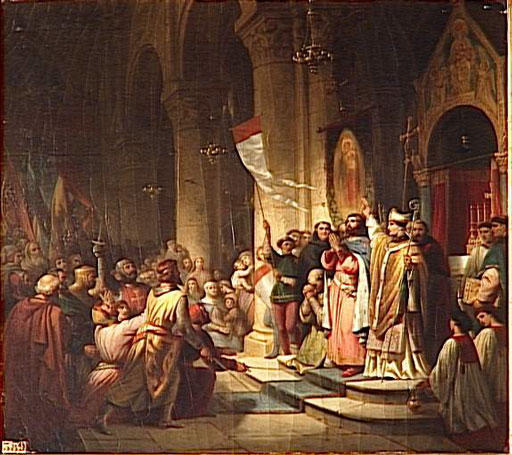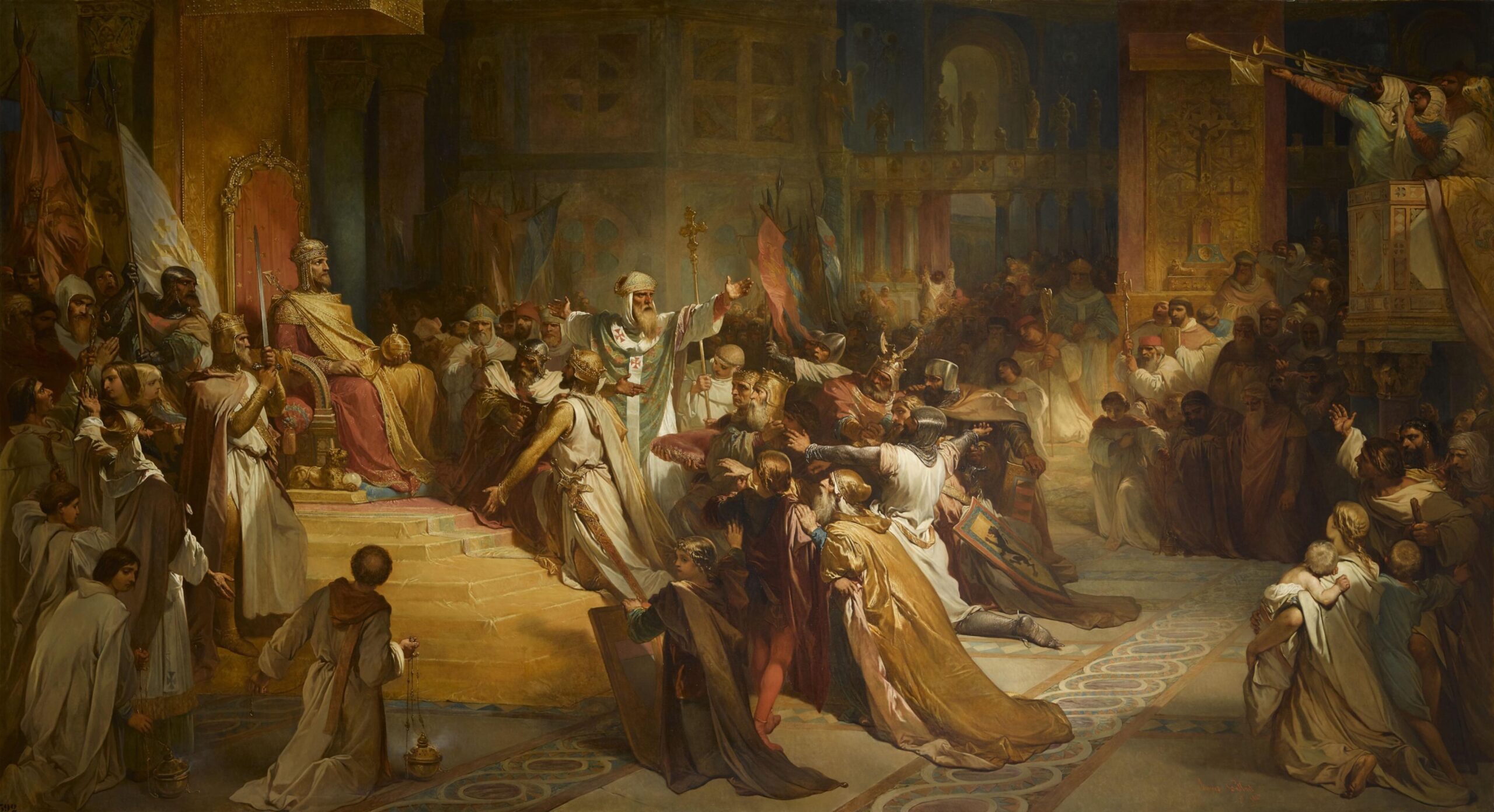By Dimitris Topalis,
The Fourth Crusade and the first Latin king of Thessalonica
After the failure of the Third Crusade (1189-1192) to get back the Holy Land, an operation that would be successful if Richard I (historically known as Richard the Lionheart, or just Richard Lionheart)’s brother did not try to overthrow him as king. Richard Lionheart’s troops were on the verge of winning in the last battle, in which Saladin had fled from Jerusalem; but fate had other plans. As we just mentioned, his brother tried to overthrow him as king back in his homeland, so Richard decided to leave the Holy Land and return to defend his kingdom. The idea of a new crusade was slowly dying amongst the western feudal. The cause of a new crusade was given by Pope Innocent III, on the day he was elected in 1198. The leadership of the Fourth Crusade was given in 1199 to Theobald III, Count of Champagne, but he died in 1201. So, a new leader had to be appointed. The man that was chosen was Boniface I, Marquis of Montferrat.
The Fourth Crusade started as an operation to reclaim the Holy Land, but later, after the influence of the aging Doge Enrico Dandolo, turned out as a conquest of Constantinople and the Eastern Roman Kingdom. After conquering the Eastern Roman Kingdom, the crusaders built small Latin states in Byzantium. After the failure of Boniface I to claim the throne of Constantinople, he claimed the rights of the kingdom of Thessalonica, after a lot of internal conflicts with the Latin emperor Baldwin I.

When Boniface I served as king of the Kingdom of Thessalonica
After he claimed the throne of the kingdom of Thessalonica, Boniface I went on a quest to conquer the city of Nafplio in the year 1205. However, at the same time, a Bulgarian monarch defeated the Latin emperor of Constantinople and tried a siege on the city of Serres. Then, after the people of Thessalonica learned about the Bulgarian monarch, they started a revolution against the Latin people in charge. After the revolution, Boniface I’s wife found shelter in the acropolis of Thessalonica. After that, Boniface I returned to his kingdom and stopped the revolution. He soon realized that the revolution of Greek citizens and the raids from Bulgarians were not going to stop, so he began to pay attention to the internal policy in the Kingdom of Thessalonica.
After that, the Marquis of Montferrat married his daughter to Henry, the brother of the Latin emperor. After the battle of Adrianople (today’s Edirne), Baldwin I and his troops were defeated by the Bulgarian monarch Kaloyan and Baldwin I was captured. We do not know how Baldwin died, but it was revealed in 1206, that after that event, Henry was crowned as the new Latin emperor, and Boniface I swore an oath of allegiance to him. Boniface I had two sons, one from his first wife, William VI, who followed him as the 10th Marquis of Montferrat, and Demetrius, who become the new king of the kingdom of Thessalonica after a lot of conflicts. Boniface I died in 1207 at the hands of Bulgarian soldiers.

Demetrius of Montferrat: The next King of Thessalonica
After the death of Boniface I at the hands of the Bulgarian soldiers, the throne of the kingdom of Thessalonica came to the hands of his underage son Demetrius, who, until his adulthood, was under the guidance of his mother Margaret of Hungary. The true power lay in the hands of the Latin barons of Thessalonica, who wanted to overthrow Demetrius and replace him with his brother William VI, Marquis of Montferrat. After a lot of internal conflicts between the Latin barons and the Latin emperor Henry, the barons were defeated, and Demetrius was crowned a knight by Henry and the rightful ruler of Thessalonica. After a lot of revolutions by the Greek residents of Thessalonica, Demetrius visited Italy in 1222 to gather help against his rival Theodore Angelus. In the spring of the year 1225, the kingdom of Thessalonica was back at the hands of Greece, after Theodore defeated Demetrius.
Afterward, William VI went to his brother for aid and started planning to retake the Kingdom of Thessalonica. During his plans, William VI took a huge loan from the Latin Frederick II that he could not deny in the future, and in the event that he could not pay it, the Marquis of Montferrat would belong to Frederick II. During the operation to take back the Kingdom of Thessalonica, William VI died and his troops fell apart. After those events, Demetrius fled to the palace of Frederick II, still carrying the title of king. Demetrius died in the year 1230, and Frederick II became his successor.
There is a conflict about that statement throughout historians, because the writer of the family of Montferrat, Benevenutus Grassus, used questionable sources to support this claim. It is believed, though, that Frederick II carried the title of king of Thessalonica from 1230 to 1239, but surrendered his right to the Marquis of Montferrat, Boniface II.
References
- William Miller, The Latins in the Levant: A History of Frankish Greece (1204-1566), published by Forgotten Books, 2017




